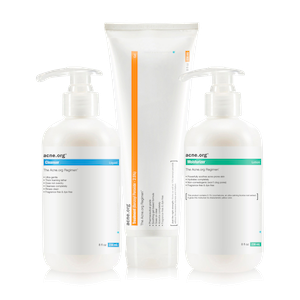Well I was reading online that honey is the healing food and is very good for you. But I also read that Raw honey and manufactured honey is/can be bad for you because raw honey wasn't pasteurized so it might contain some toxins of some sort and manufactured is bad because they heat it which destroyed the healing properties. If both of these are true then what should I look on the label which won't contain toxins and will still have its healing properties? Can the toxins in the raw honey cause acne if used on the skin?
PLEASE HELP!!
The only real issue with raw honey is the potential for allergic reaction, which in susceptible individuals could definitely be quite severe. Raw honey is far more nutritious, and teeming with live enzymes, and likely other various "x-factors". Commercial honey is likely filtered (less minerals/vitamins) pasteurized (high-heat = dead enzymes) and who knows what else given the degree of processing much of our food undergoes. Raw or not, honey is still pure sugar and shouldn't be overconsumed.
My friend- "raw" is probably the only thing that will save us as a species. Hardly anything is raw anymore and that's what's hurting us. No food is kept in its natural format. Think about our ancestors- did they have pasteurization plants and stuff like that? Nope...but they sure drank milk and ate honey (the land of milk and honey- old old story). So have no fear of crazy lies. Live with healthy skepticism and of coese be careful with what you ingest but remember: raw is best (most of the time ![]() )
)
omg, stop using it! All fruits and vegetables in their raw state can be toxic, i mean, it's amazing people have survived this long!! Wash everything in antibacterial soap, rinse, bleach, rinse again, then cook it till it no longer looks like a fruit or vegetable, then you know for sure that you are in the clear. Here, a word of warning from the FDA (they are soo smart and helpful):*
Whereas the health benefits associated with regular consumption of fresh fruits and vegetables have been clearly demonstrated, an increasing- though still small- proportion of reported outbreaks of foodborne illness are traced to fresh produce (Ref. 15). Recent outbreaks of foodborne illness associated with produce, including E. coli O157:H7 in mesclun mix lettuce and Cyclospora in imported raspberries, have raised concerns regarding the potential safety of fruits and vegetables that are not subsequently processed to reduce or eliminate pathogens. However, no estimates are available on the incidence and prevalence of foodborne infection associated with the consumption of fresh produce.
antimicrobial chemicals in processing water are useful in reducing microbial build-up in water and may reduce microbial load on the surface of produce. Thus, antimicrobial chemicals may provide some assurance in minimizing the potential for microbial contamination.
The effectiveness of an antimicrobial agent depends on its chemical and physical state, treatment conditions (such as water temperature, acidity [pH], and contact time), resistance of pathogens, and the nature of the fruit or vegetable surface. Chlorine, for example, is commonly added to water at 50 - 200 ppm total chlorine, at a pH of 6.0 - 7.5, for post-harvest treatments of fresh produce, with a contact time of 1 - 2 minutes.
 Acne.org Products
Acne.org Products